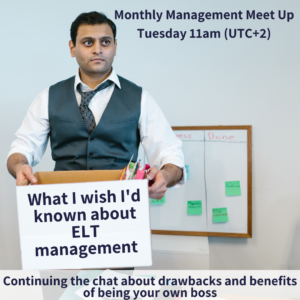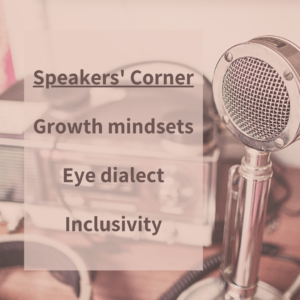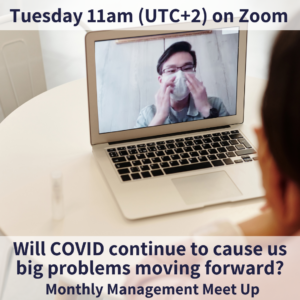As with anything in life, there are pros and cons to freelancing as well as to owning your own business and managing others. In this chat we focused more on working on our own and for ourselves and here are some of the ideas we came up with:
Advantages
Having the flexibility to choose what to take on is definitely a benefit…as long as there is enough work to choose from. One participant mentioned that around the pandemic they felt that having a stable job might have been better.
It allows you to focus on your priorities at different stages in your career and at different points in life.
It can give you the freedom to develop your own projects – though it’s important to find the balance between paid work and setting up / running other ventures.
Disadvantages
One participant talked about the isolation of working alone. Whilst the internet gives us many opportunities to interact wth colleagues – and the pandemic forced us to much more – it’s very different to sharing a physical space with someone. That said, there are lots of ELT communities online on Facebook (like the Hub!), Twitter (with #SIGTweetMeet or various #edchat meet-ups) and many ELT professionals also set up WhatsApp groups to keep in touch.
For those of us working from home, inding a suitable working environment can be tricky, particularly in these pandemic times when many of us find ourselves sharing a homeworking space with other family members. Co-working spaces are not always appropriate for teaching. A couple of suggestions for dealing with distractions if you’re working on projects were Coffivity which Rachael Roberts mentioned in her webinar on time management and binaural beats. This also led on to some chat around when we’re most productive…which became this week’s Wednesday Question. One participant mentioned finding the Pomodoro Technique (also mentioned in Rachael’s webinar) particularly useful around deadlines and that having a physical timer on the other side of the room meant that you would definitely get up to turn it off.
Another distraction which was mentioned was procrastination and the ease of going down numerous rabbit holes which turn into endless research on a project.
Speaking of projects, we chatted a little about online learning platforms. One participant has a couple of courses running through Udemy which provide a source of income without requiring much work after the initial set-up. We talked about these massive online course providers, such as Udemy and FutureLearn and identified that whilst they are very good for transmitting and receiving information, they’re less appropriate if you’re looking to build or join a community. When courses require commenting as part of the requirements, these comments tend to be rather perfunctory rather than engaging and one participant mentioned that these courses tend to have a low retention rate – perhaps because they are often free or very cheap.
It seems that some might now be trying to introduce a keyword search functionality in forums so that threads become more of a mindmap than a linear conversation.
This led us on to thinking a little about how education might change post-pandemic (if we ever get there). It feels very much like many institutions are still seeing this as a reactive period after which we’ll get back to the way things were before – but the pandemic has shown many of the failings and possibilities in education…here’s to hoping we can take some of the positives away with us.





